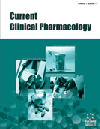-
oa Editorial [Hot topic: Selected New Developments in Oncology (Guest Editors: Jos H. Beijnen and Jan H.M. Schellens)]
- Source: Current Clinical Pharmacology, Volume 5, Issue 3, Aug 2010, p. 140 - 140
-
- 01 Aug 2010
- Previous Article
- Table of Contents
- Next Article
Abstract
In several Western countries cancer has passed cardiovascular diseases of the top-3 causes of death and now heads the charts. Better treatment options and preventive measures in cardiovascular medicine have resulted in its sharp decrease of death rate. Part of the explanation, however, is that cancer incidence is still rising every year. This is primarily due to the proportional increase of the ageing population, with cancer being especially an old people's disease. On the other hand, the cancer death rate, fortunately, gradually declines. Better diagnostic tools with early recognition of malignancies, as well as better treatment outcomes have contributed to this. The cancer problem, however, is and remains immense in the coming years with a huge impact on people's life and society. It has been estimated that worldwide, more than 28 million people live with cancer nowadays. Progress and improvements in cancer treatment are difficult to forecast. Sometimes, big steps are made such as the introduction of cisplatin for the treatment of testicular cancer [1] or adjuvant chemotherapy in breast cancer [2] that can bring about the difference between death and cure. Major advances have also been made in the treatment of several hematological childhood cancers [3]. But, usually, small steps are made in oncology. Positive clinical trials yield mostly one or two months improvement in overall survival. Nevertheless, when many of these steps are taken consecutively, they may all together contribute to substantial changes in patient's perspectives. The chemotherapeutic treatment of colorectal, lung and ovary cancer has evolved in this manner. In the years to come, real breakthroughs in cancer treatments are most likely to be expected from the combination of basic understanding of the molecular processes underlying cancer development and the identification of the drivers that can serve as target for therapy. This approach was also followed in the search for effective therapies against human immunodeficiency virus (HIV) infection. Basic research revealed all the intricate steps in the life-cycle of the virus and bared the targets for drug therapy [4]. Nowadays, cocktails of antiretroviral drugs are used acting at different levels of the virus infection, from entry into and exit from host cells. This pharmacotherapy has turned, in less than 30 years, the HIV infection from a death sentence into a chronic disease with acceptable quality of life. Evidently, HIV infection and cancer are not synonymous. Above all, the infection is caused by a foreign virus and cancer arises from genetic aberrations in normal cells. Nonetheless, the same line of thinking in therapy design has come into sight [5]. This special Oncology issue of Current Clinical Pharmacology touches on a selection of new developments in cancer treatment. It is hoped that it will inspire its readers to participate in cancer research and treatment in the coming years and to witness all the new challenges to come.


